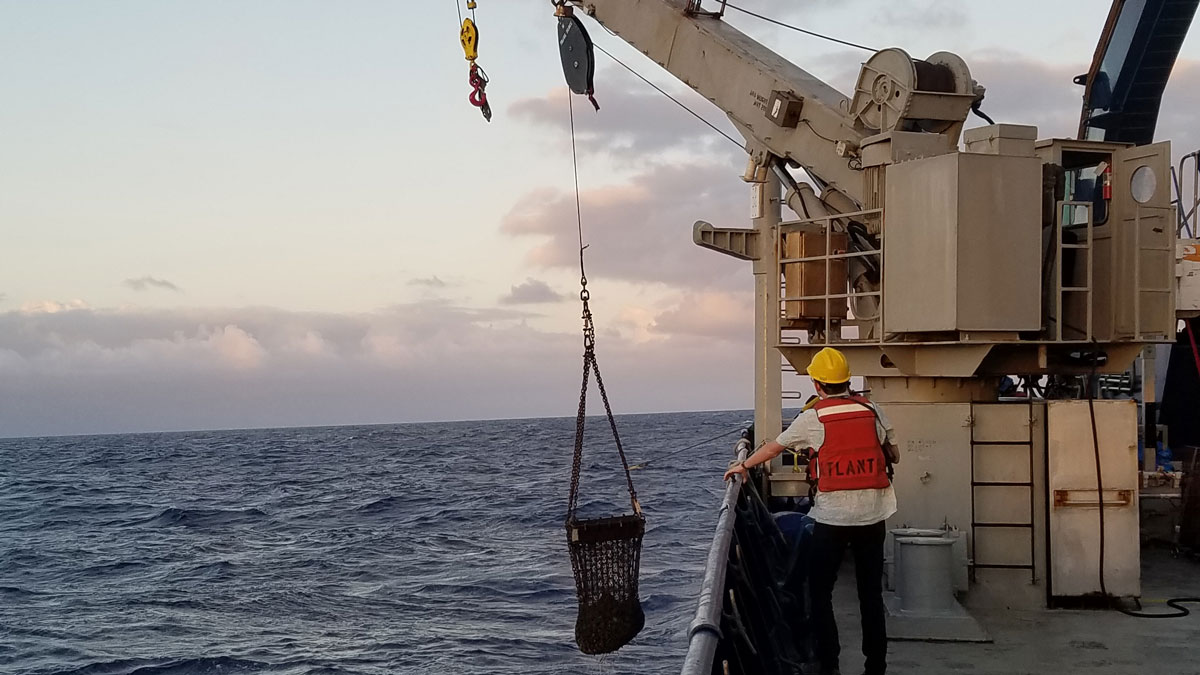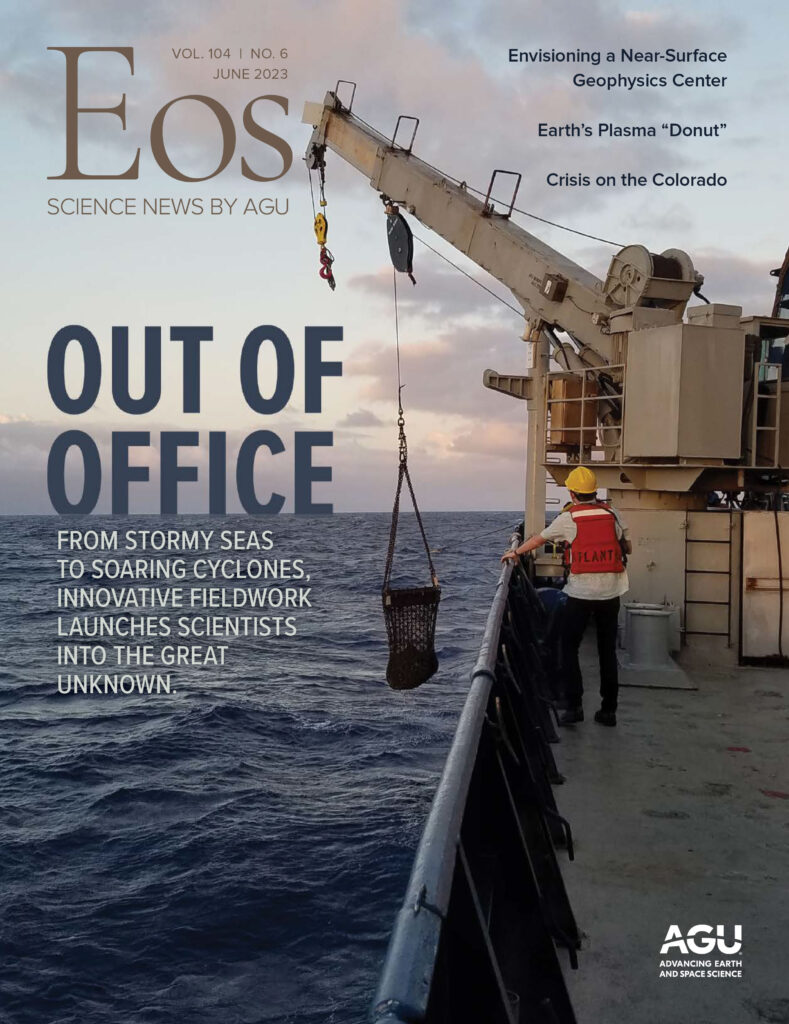This year, our annual issue on fieldwork takes you into the blue.
NOAA’s Hurricane Hunters (and a few high-tech Muppets) literally go into the azure eye of the storm for data to help forecasters, policymakers, and emergency management agencies better grapple with hurricanes in the Gulf of Mexico. Buckle up with Alka Tripathy-Lang as she catches up with Kermit, Miss Piggy, and the meteorologists who rely on them in “Hunting Hurricanes.”
From sky blue heights to cerulean depths: Geophysicists (well, their proxies) thrice dove into the South Pacific’s Gofar transform fault to better understand its seismic properties. Deploying instruments ranging from ocean bottom seismographs to autonomous underwater vehicles, scientists studied electrical conductivity and hydrothermal circulation. They also established a refreshing set of best practices for research at sea—supporting a diverse team of scientists and technicians that allowed the fieldwork “to accomplish all the goals of the cruise and, at the same time, open opportunities for young scientists to gain experience and minimize disruptions to scientists’ lives on land.” Learn more from Margaret Boettcher, Emily Roland, Jessica Warren, Robert Evans, and John Collins in “Observing a Seismic Cycle at Sea.”
Black volcanic rock provides a break from the blue as we share a story of scientists venturing to the inland Cascades. What motivates people to undertake such scorching summer expeditions? The Columbia River Basalt Group, the “best studied flood basalt on Earth,” but one whose dike systems are still shrouded in mystery. Catch up with Anthony Pivarunas, Margaret Avery, Joseph Biasi, and Leif Karlstrom in “Baked Contacts Focus a Lens on Ancient Lava Flows.”
Finally, we here at AGU are more than a little blue at the retirement of Brooks Hanson. Brooks has served as AGU’s Executive Vice President for Science for more than a decade, a time during which he has been a tireless champion of science and scientists. Brooks leaves on a characteristically positive note for us here at Eos: He joins Xavier Comas, Sarah Kruse, Gordon Grant, and Laura Lyon in encouraging the creation of a center to convene and coordinate the dizzying array of sciences associated with Earth’s near-surface environment; read more in “Envisioning a Near-Surface Geophysics Center for Convergent Science.”
We hope it’s nothing but blue skies ahead for Brooks and the rest of our scientists navigating fresh fields of study.
—Caryl-Sue Micalizio, Editor in Chief


